Introduction
"B2B marketing doesn't have to be boring!"
It's the industry's go-to cliche.
Here at Foleon, we take issue with a few of the assumptions underpinning this all-too-common catchphrase.
First, it suggests that our industry is boring by default. Here's a wake-up call for you; it's not 2012 anymore.
The business landscape today is filled with passionate, engaged people looking to make a meaningful impact on the world. They care deeply about what they do and how they do it. And they're ultra-geeks when it comes to the tools and services they use to get the job done.
Didn't anyone tell you? Nerdy is the new cool. And B2B marketing efforts have come a very long way. Don't assume for a minute that audiences don't care about you, your business, or your product.
Plus, not everybody has to have a flashy, hi-tech product to make an impact. Great B2B marketing isn't about having the most cutting-edge product or marketing campaigns. It's about finding a unique angle that engages people and provides value at the same time. Ultimately, it's about enabling your audience to reach higher goals. In an age when the impact of business is global, you must expect your buyers to have global concerns.
So if that's what B2 B marketing isn't, then what is it exactly? What does a great marketing strategy between businesses look like in 2026? Which marketing strategies are actually delivering results right now?
That's what we're going to explore over the next few thousand words. Of course, there's no one way to do B2B marketing right. Vastly different approaches and marketing campaigns can yield great returns. As we explore these contemporary examples, though, we hope to discover some underlying principles that shape our understanding of quality marketing. In doing so, we'll get a feel for how today's marketing landscape differs from everything that's gone before.
A short disclaimer for you; there's going to be a lot to digest here. To master the art of B2B marketing, we need to understand the breadth and depth of B2B marketing campaigns. That's no easy task. So settle in for an epic exploration of some of the best B2B marketing campaigns of the decade so far.
First, though, let's clarify a few terms to set the stage for our analysis.
What is B2B marketing, really?
It’s the craft of marketing to businesses, plain and simple. However, the reputation of B2B being boring is closely connected to this idea. We hear the word 'business' and instantly think of faceless corporations in ugly glass buildings. And we forget about what a business really is—a group of people coming together and working for a shared purpose.
Often, it's the profit motive that drives a business. But that's not always the case. Businesses today commonly find themselves striving for higher ideals, including solutions to social, environmental, or even cultural challenges.
We’re all human
The best B2B marketing efforts recognize this human factor. And the very best actively works to enable the attainment of those higher goals, going beyond sales motives to build something of deeper value.
That may sound a little far-fetched for the corporate world. But the marketing campaigns to come will show you just how that idea can play out in reality. And you'll see the kind of results it can produce.
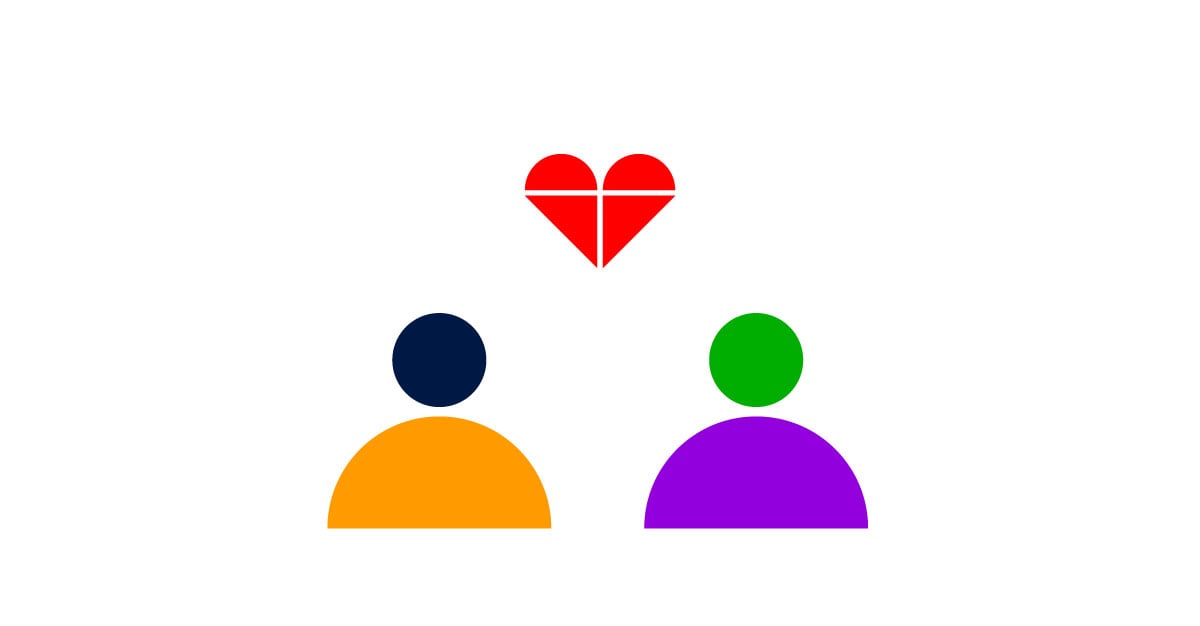
What makes B2B different from B2C?
A business is simply a group of people. As such, we believe that the difference in mindset between B2B marketing and B2C marketing is commonly overstated. Whether we're at work or at home, we're still subject to the same emotions, dispositions, and prejudices.
That means that no matter your product, the right buyer can find it just as exciting as the best consumer goods. That feeling of getting a new watch, or perfume that you've wanted—there's no reason not to shoot for it in the B2B marketing experience.
Longer buying cycles
That being said, there are some crucial differences that can't be ignored. Purchase cycles are often longer in the B2B space. When there's lots of money on the line, your buyers will invest the extra time and effort needed to make sure they're making the right choice. It's probably more appropriate to compare the purchase to a new car, or even a house, than a new pair of trainers.
Your buyers will want to be in this relationship for the long term. That's why service-based models are the go-to packages in the B2B industry. And that makes sense. If you're investing a lot of time and energy into your purchase, you don't want to be doing it again six months later. This has implications for the number of times providers will want to invest with their audience.
Medium and tone
User journeys can be significantly different in the B2B space, too. When your audience interacts with media, they expect a certain experience. Breaking those expectations can have a profound impact—often negative—on their impression of your brand. That's why a business will turn more readily to LinkedIn, for example, than to TikTok for B2B marketing.
That's not to say that engagement behavior varies significantly from medium to medium. The same things still make us laugh, pique our interest or tug on our heartstrings. It's just that brands need to pay close attention to the ways in which audiences define their spaces.
Don't bug your audience with work when all they want to do is relax. And don't play the fool when the pressure to perform is on. Your success in B2B marketing is likely to depend on your sensitivity to these changing needs.
Our emotional states, and thus our expectations of the media we consume, fluctuate within our homes and workspaces just as much as they do between them.
Inform us, but don't bore us. Engage us, but don't waste our time. Such are the demands of the B2B audience.
Defining success in B2B marketing
How many people bought the cheese?
If you're selling cheese, that's probably a pretty important metric to measure. It tells you if the effort you're putting into your marketing strategy is actually having an effect on sales.
After all, your goal is to sell more cheese. You'd better be measuring how much you actually sell. Some might say that’s the ultimate measure of success in the cheese-marketing business.
But what if you're already selling as much cheese as you can produce right now? Then you face a dilemma.
You could halt all your marketing activity and save yourself some money. But that opens you up to the possibility of losing buyers to the next big cheese on the block.
You might find yourself with a dramatic and unforeseen drop in sales, destroying your business overnight. On the other hand, you could keep spending what you're spending, knowing that the immediate ROI on your marketing efforts will be exactly zero.
Suddenly, the relationship between marketing spend and return isn't so clear-cut.
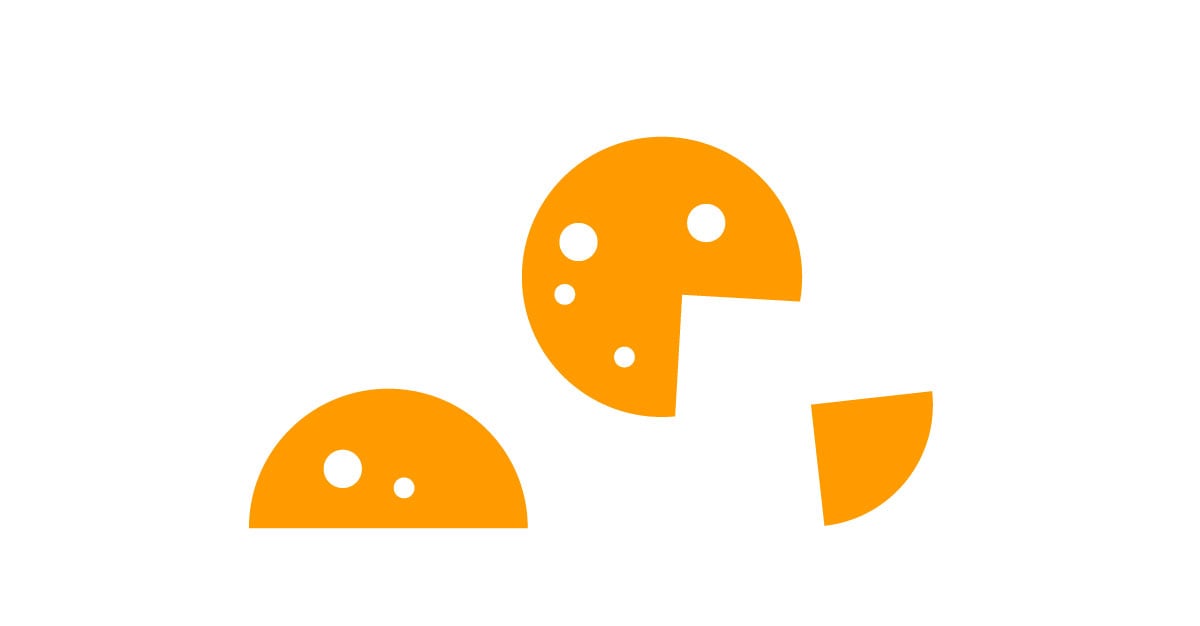
B2B Metrics are complex
This kind of problem plays out in far more complex ways in the B2B space. Although companies are always competing against each other for sales, the sales today don't necessarily guarantee sales tomorrow. That's why elements like brand visibility, market value, and engagement are crucial competitive spaces in today's B2B landscape.
Two million views on a blog post won’t have any monetary value. They might not even track into active conversions. But they could be an indicator of brand familiarity that will drive sales in the long term.
So how do you measure these more abstract elements of the marketing dynamic? And, perhaps more crucially, how do you know which metrics will affect the performance of your business?
Good to know: PDFs can't be tracked or measured, but there are alternative formats!
Learn more
In the following examples, you'll see a range of metrics offered to convey campaign success, from sales increases to views, to even government policy changes.
All of them are important metrics to the individual businesses involved because they align with their market strategies. However, not all of them have to be important to you.
Stay flexible
Choosing which metrics to focus on is all part of the art and science of good business. There are no easy answers here. Even the Foleon team had to learn through experience which metrics matter most to our business. Spoiler alert: turns out it was engagement rates.
The crucial thing is not to be dogmatic in your approach to measurement but to stay vigilant, experiment, and try new things. And always keep in mind your reasons for being in business in the first place—they should be the guiding principles for every metric you choose to follow.
For more information on success metrics, take a look at our guide to measuring the ROI of content marketing a little later. As for right now, it's time to dive into our superstar campaign examples.
6 B2B marketing examples to inspire your next campaign
Playing it straight with Ask the Expert by Quickbooks
For a while now, creating value for customers has been de rigueur in the B2B content marketing space. The strategy is straightforward; create content your customers will find useful, and they’ll come to you. Then, when they find themselves in need of your product, they’ll already be so familiar with your brand that a purchase feels like a no-brainer.
Of course, marketing is rarely so straightforward. There are critical issues around content visibility and distribution, audience-messaging fit, competitive proposition, and more that need to be resolved. However, the basic premise is sound. And when all these strategic challenges have been successfully managed, you end up with a campaign like Quickbooks’ Ask the Expert.
The marketing campaign featured simple question-answer video sessions held with expert accountants. Their content tackled some of the Quickbooks audiences’ biggest challenges in dealing with finances and bookkeeping for small businesses. You might not be surprised to learn that the campaign idea was thrown together over a 24-hour marketing hack and run by a skeleton crew of five in-house marketers.
In total, they created 62 Ask the Expert videos, reaching 6.5 million viewers. By the end of the year, 31% of subscriptions to the Quickbooks Youtube channel came from Ask the Expert videos alone. That’s a massive accomplishment for a 24-hour brainstorm.
The team certainly wasn’t reinventing the wheel when they came up with this idea. So what made Ask the Expert such a success? The secret is in the emotional appeal of the series. Small business owners are often solopreneurs taking on all the responsibilities of running a company alone.
They don’t have the funding to bring in expert advice and often have to go well out of their comfort zone and skillset just to keep things running. Any small business owner will tell you that doing your own accounts and bookkeeping is hard. And the costs of doing it wrong can be sizable. It’s a huge comfort to have an expert on-hand to answer pressing questions for free.
Ask the Expert doesn’t just solve practical problems. It solves emotional ones. It helps remind small business owners that they aren’t alone, that help is there when they need it and that Quickbooks will always be there. That’s what made it a runaway success.
Keeping it real with Employee Advocacy by Drift
Drift is a marketing platform that uses chatbots and emails to create what it calls ‘conversational marketing’ experiences. And they’re masters of their craft. Much like Quickbooks, Drift doesn’t do anything outlandish with its B2B marketing efforts. It’s just great content, produced consistently, backed up by an excellent approach to distribution and social media.
But it’s not what Drift does that has earned it a place on this list. It’s how they do it.
Drift’s marketing strategy is driven by an aggressively transparent approach that puts people at the center of the conversation. Hop on over to the Drift website, and you’re going to see a lot of faces in their imagery.
Those aren’t stock photos—they’re real shots of life in the Drift office. Even their blog puts people at the heart of the content they produce. Take a look at this conversation with their CMO, for example.
Drift calls this approach to marketing Employee Advocacy. And it's visible everywhere, from their lead magnet downloads to their LinkedIn feed and more. Wherever you go, it’s the Drift team and their customers that are front and center of the conversation. This approach is genius on a number of levels.
By documenting the highs and, yes, also the lows of office life, Drift has created an unlimited source of content for its channels. They still have to create valuable content. However, the small dramas and comedies that play out across their social media put that work in context, making it so much more compelling to follow.
More generally, though, Employee Advocacy is the perfect fit for the Drift brand. As a startup that began life during the early years of marketing automation, the Drift market position was built on a bet—that B2B buyers will quickly tire of the ‘dehumanized’ experience that marketing automation provides. Instead, they built their brand around the personal touch.
Their marketing strategy, then, is deeply tied to their ethos, their product, and their business goals. Drift wants to make business more human. Their marketing efforts reflect that in every aspect.
Technology can bring people together. But it also separates us at the same time. It’s both a catalyst and a barrier to human connection. The Drift team doesn't let the marketing experience strip business-to-business, selling off its humanity.
That’s what makes it so successful. And successful they are. The team has built a $500+ million sales pipeline in less than a decade. Their marketing team has won numerous awards for their efforts, including Comparably’s 2021 Best Marketing Team award.
We highly recommend seeing what they’re all about.
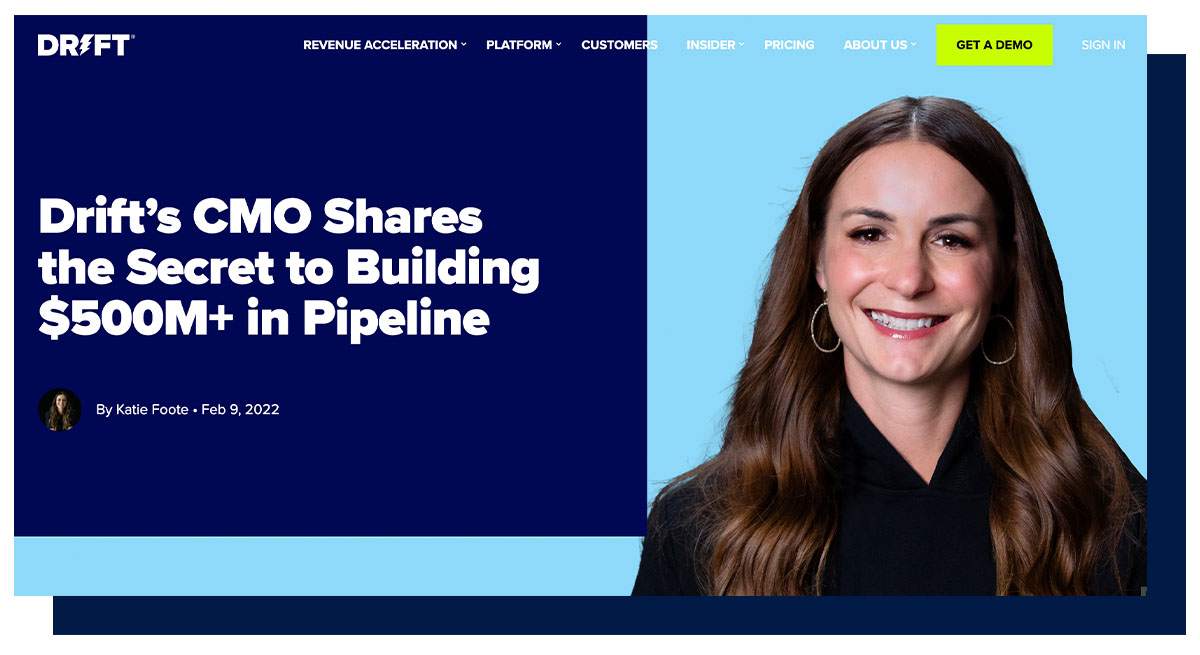
Pushing the limits with the Radical Regeneration Manifesto by Bidwells
Most companies measure the success of their content in terms of its reach. They count clicks, page views, and other metrics in an effort to measure how much exposure their brand has earned. However, that’s not the only way to analyze the success of your content. You can go one step further and ask:
How much impact has my content made?
The B2B marketing materials you create are definitely tools to help your business reach its goals. But they are also meaningful in and of themselves. The ideas you share can affect the world around you in surprisingly profound ways.
From inspiring someone to start a business to influencing policy decisions, the messages you spread have the power to shape the world for the better. This is what we refer to as ‘meaningful content’ here at Foleon. It’s also the premise that inspired the Radical Regeneration Manifesto by Bidwells.
Bidwells is a UK property consultancy business specializing in the Oxford and Cambridge region. As a consultancy, their service proposition isn’t always easy to communicate to potential clients.
They needed a way to position themselves alongside decision-makers at key property firms while advocating for the region as an investment opportunity. Their solution was to take the issue of property development all the way to the top.
The Radical Regeneration Manifesto brought together 25 industry leaders to set out a plan for quality regional development. It was a serious document designed to pull together the best thinkers in the field and show legislators that the region was ripe for regeneration and development.
The writing process saw them interviewing industry leaders to get their ideas on development opportunities which were then recorded in the manifesto around 30 key themes. Finally, the manifesto was presented to legislators to help them guide policy decisions.
The results went beyond all expectations. The manifesto was met with broad approval by legislators, and Bidwells was selected to hand-pick 40 development projects for rapid development.
This brought forward development opportunities in the region by at least five years. On the marketing front, the corresponding social media campaign brought in 10,000 site visits and 65,000 views. Those are big numbers for such a niche business. The manifesto was also covered by Sky TV and The Times newspaper.
The manifesto itself was clearly an effective piece of marketing. But the process of creating that manifesto was clever marketing, too. Writing it gave the team a platform through which to network with key authority figures in the region.
They gained the opportunity to talk shop with decision-makers, build brand engagement and pitch their services under the radar. To a consultancy, these connections and the resultant market positioning are invaluable benefits that can’t be easily quantified.
Not every business can take its issues all the way to the government. But the strategic principles Bidwells employed can be used by anyone to take marketing to the next level.
The team changed the buyer/seller dynamic, bringing clients into a collaborative environment where they were valued for more than just their wallets. That’s B2B marketing at its very best. And the impact speaks for itself.
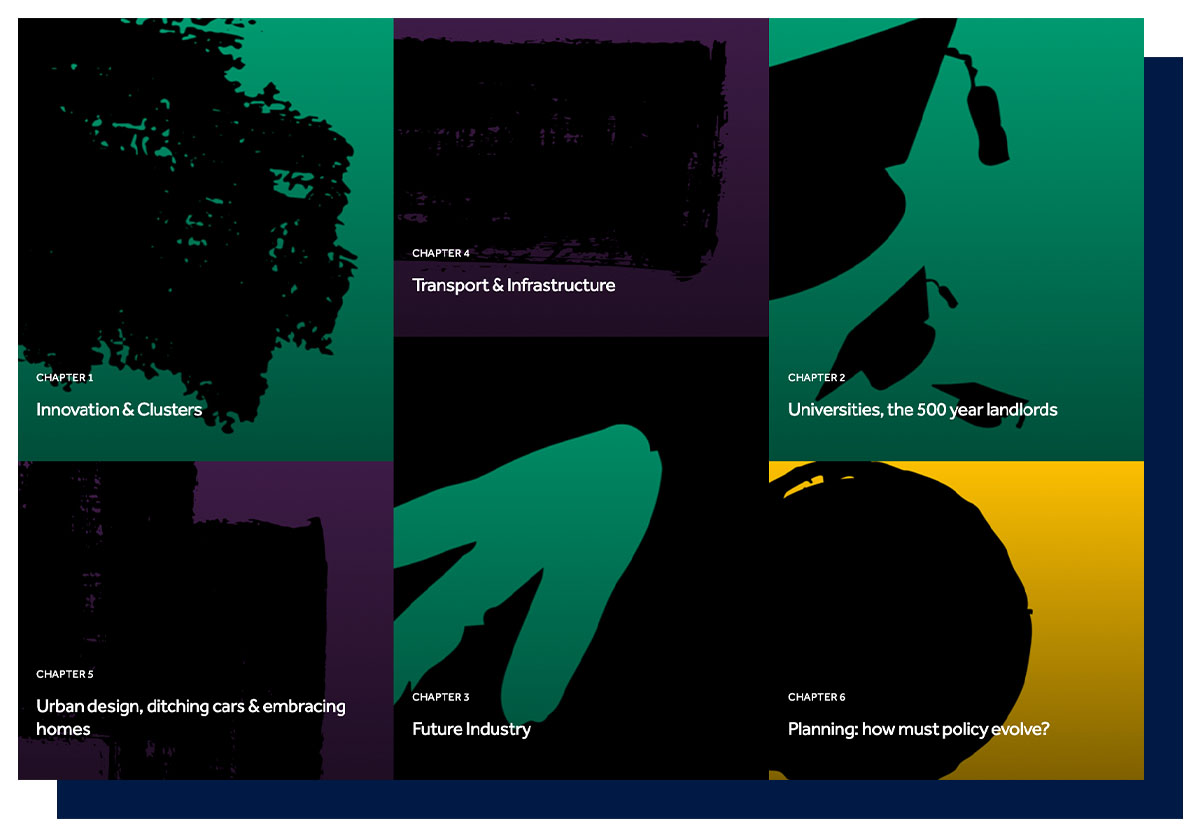
Something completely different with Did you mean Mailchimp? by Mailchimp
Sometimes in the B2B space, you find yourself in a strong position in the market. You’ve got a good product that’s delivering great results. People are excited about your brand. All you need to do now is make sure more people hear about you.
That’s when things get fun.
There are as many ways to get attention in B2B marketing as there are marketing strategies. But a great one is to launch something completely whacky and outrageous just to make some noise. Although it sounds a bit crude, you’d be surprised about just how effective it can be.
This was likely the thinking when disruptive email marketing service Mailchimp launched their Did you mean Mailchimp? campaign. Playing off the fact that lots of people (apparently) mispronounce their brand name, the team launched a series of short films that make fun of these slips of the tongue. They feature such oddities as a singing shrimp, a dog made of kale, and an airship full of prison inmates.
But the marketing campaign didn’t end there. Never shirking an opportunity to go totally overboard, Mailchimp built a musical instrument using whale sounds, launched a men’s hair trend, and even created a chart-topping song. Phew.
What’s interesting about the campaign is that it proves that you don’t need to be deadly serious about your business all the time to be successful. Your content doesn’t even have to be about your product.
Unlike the previous campaigns, Did you mean Mailchimp? adds basically nothing of actual value to the world. Except, that is, maybe a laugh or two. But the surreal, flying-circus world that it creates is pretty hard to ignore.
The idea plays off people’s desire to make sense of what they’re seeing. When you see one of these ads, it’s almost impossible not to look it up afterward on your phone. Type in the title on Google, and it will immediately ask you, “Did you mean Mailchimp?”
That’s pretty clever stuff. And it was clever enough to win the team a Cannes Grand Prix trophy in Cyber.
It’s crucial to understand that the playful, almost impertinent Mailchimp brand voice reflects the nature of its product. Mailchimp is a disruptive service that made its name by undercutting heavyweight email platforms like Exact Target and Pardot.
They offered the same essential functionalities without technical complexity. It makes sense, then, to have a brand voice that pokes fun at the ‘serious’ work of email marketing. Did you mean Mailchimp? adds some levity to an otherwise dry, technical industry.
The campaign’s strength is that it’s not just one thing—the same idea is iterated across different mediums in different ways. With a bit of creative elbow grease, the team was able to stretch one key concept and provide a range of different ways to interact with the brand.
It’s also important to mention that the cross-format nature of the campaign content helps to drive its popularity. To experience it is to feel the need to dig a little deeper into the brand. That’s something every B2B marketing strategy and marketing campaigns should be striving towards.
Blending work and play with Small Talk by Sage
We’ve already discussed how creating value for your customer is at the foundation of great B2B marketing. We’ve also seen what happens when you throw value out of the window and just have a little fun. But what happens when you blend the two?
Mix entertainment value and business value and you get ‘infotainment’—an underrated marketing genre that can be wildly successful. It’s easy to see how infotainment can come across as cringeworthy.
Business and comedy rarely go hand in hand. As a result, many commercial businesses shy away from the concept. But infotainment (or sometimes edutainment) has been shown to be one of the most effective drivers of behavioral change available to communications professionals. All you need to do is to strike the right tone.
Small Talk by Sage doesn’t take the comedy part of its infotainment too seriously. It’s only there to lighten up an otherwise serious discussion about business success. This series of short question-answer sessions pair up business guru Peter Jones with two precocious pre-teens to answer their pressing business questions.
The videos are light-hearted, easy to digest, and offer some genuinely insightful business advice from a widely recognized entrepreneur.
What makes the videos a little bit more fun is that it’s clear Peter wasn’t expecting to be interviewed by kids. It’s a bit of fun without trying to go overboard on the laugh factor.
This simple campaign concept drove an impressive 1.7 million impressions and resulted in over 17,000 new customer engagements. For an enterprise-level service like Sage, those numbers could result in massive financial returns. It was a lightning-in-a-bottle campaign that Sage said was one of its most successful ever.
So why does it work? As discussed, striking the right tone was crucial. But so was having a concept that’s easy to grasp. You don’t have to know anything about accounting to be in on the joke here. That accessibility gave Sage traction amongst an audience who would probably want to be thinking about anything other than payroll software.
The conversations in Small Talk also focussed on general business principles rather than getting bogged down in the details of the product. That helps to warm up the audience slowly to the brand’s central proposition. The campaign also benefits greatly from Sage’s established brand presence. As a heavyweight in the space, they have the luxury of not having to explain themselves or their product too much.
Finally, Sage’s distribution for this campaign was smart. They split a single interview into lots of bite-sized chunks before publishing them in both video and text-transcript formats.
This process—called content atomization—can be a great way to get much more mileage out of a single content piece. That one interview provided a tonne of great content for Sage’s blog, social feeds, and Youtube channel, not to mention all of the added SEO and backlink value.
Overall, the Small Talk campaign has a lot going for it. Would it have worked without the backing of big brand names like Sage and Peter Jones? It’s hard to say. Nevertheless, there’s a lot to take away from its success.
Owning your niche with the Data Literacy Program by Qlik
A lot of marketers out there operate by the ‘create value’ matra. But most of them think that pushing out two or three short articles a month is enough to do that mantra justice. Very few actually go all-in in their attempts to own a topic and make the space truly transformational for readers. Some, like Qlik, do.
Qlik sells data analysis and analytics platforms. Their website is rife with techno-buzzwords such as ‘data lakes,’ ‘embedded analytics’ and ‘active intelligence.’ It’s enough to make even seasoned professionals feel a little out of their depth. But Qlik is quick to show customers that they’re keen to bring their audience up to speed on data issues.
There’s no denying that the world of big data is technical and complicated. But Qlik reminds us just how important it is for us all to understand these concepts. That’s what the Data Literacy Program is all about—making sure their audience isn’t intimidated by the critical data issues that can and will affect our lives. As their video training sessions state, “who needs data analytics courses today? Everyone!”
Whether the Qlik team realizes it or not, the Data Literacy Program is just another content marketing campaign. But it’s packaged in such a way as to make it feel like you’re participating in an educational experience. In fact, you are. Qlik really goes above and beyond to ensure the content provides transformational material to help upskill its audience.
They also cleverly place the content alongside paid workshop products, adding to that educational feel. The result is a campaign that positions Qlik as a true thought leader—not just another brand that claims to be one. Businesses that make effective use of the resources here stand a good chance of transforming their work culture to a data-first mindset.
The Data Literacy Program earned Qlik marketing prizes from ITSMA, TrustRadius, and the Giants of B2B Marketing awards. Awards are nice, but it's the authority that the campaign projects that make the Data Literacy Program invaluable as a business asset.
We wouldn’t like to have to calculate the ROI on that monster. It’s a campaign that will only grow in value as it matures, doing wonders for Qlik’s SEO visibility as well as its brand authority and conversion rates. There’s also tons of content here to post to social channels.
Campaigns like this require serious commitment and a huge amount of resources to run. But the value to the business is very literally immeasurable. Moreover, the Data Literacy Program tells us a lot about who Qlik is as a team.
Not only are they expert enough to teach what they know, but they’re also passionate about the role of data in our lives. Qlik wants to make sure that data literacy is open to everyone. That makes them seem like the kind of company you might want to work with.
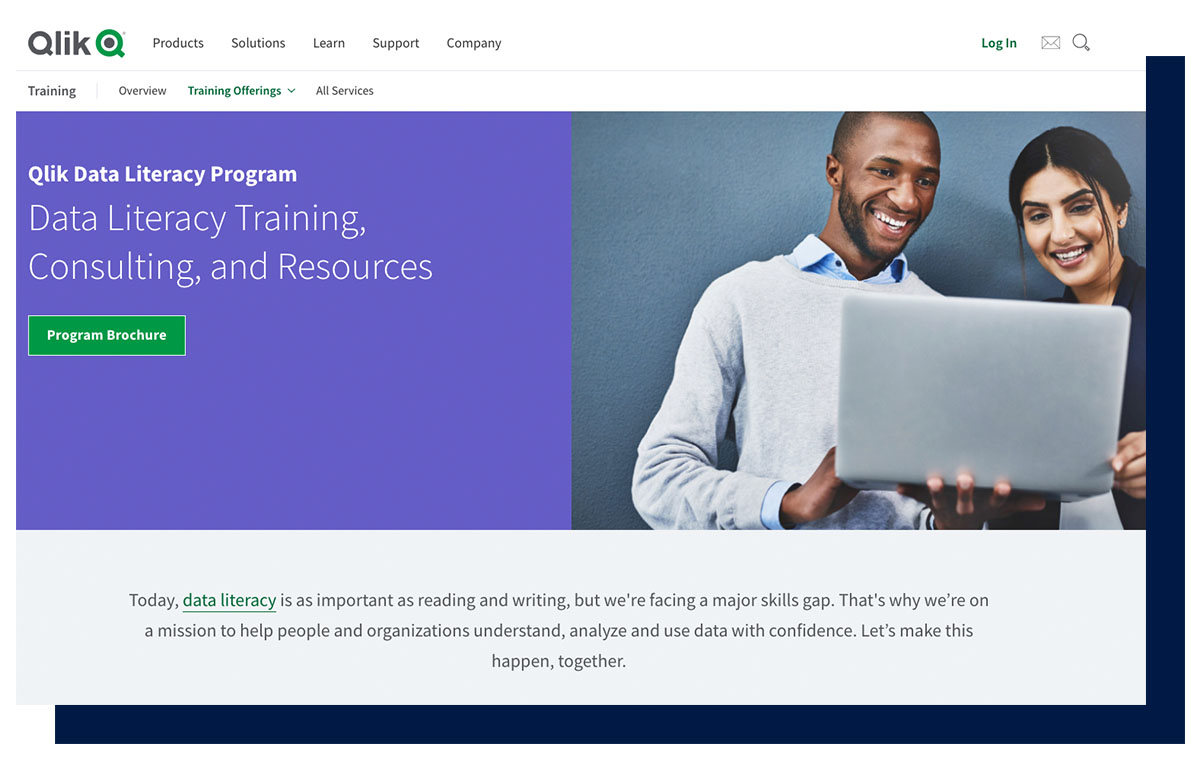
Final thoughts
If we’ve done nothing else today, we’ve proved that there’s more than one way to run a successful B2B marketing campaign. The examples above, for the most part, make use of the same tools and channels as everyone else. And they all achieved strong results relative to the size of their resources.
Yet they’re all wildly different in their intentions, executions, and tone. Some of them embrace the prevailing wisdom of contemporary B2B marketing, whilst others carve their own path to create something pretty unique. They barely even share the same idea of what a marketing campaign actually is.
That tells us a lot about the state of B2B marketing in 2026. Great B2B marketing is immersive, multi-dimensional, multi-channel, and multi-media. It’s entertaining, educational, valuable and fun, serving multiple needs at the same time. It shapes the environments we live in, leads us to new conclusions, and inspires us to make a change. It can be all of these things at once, or it can do just one or two of them really well. Or just maybe, it will do something else entirely.
Roads to success
In an effort to break down this complexity into something a little more rational, here are some roots to marketing success that you could model your next campaign after. Following any one of them doesn’t guarantee victory but it does give you a headstart in working out what your next campaign might look like.
- Create useful content your audience can trust. Then, make it easy for them to find.
- Document, rather than create. Build a window into your company culture that makes you seem more human.
- Start a project that will impact your community for the better. Then bring in others to help you take it as far as it will go.
- Be loud, cause a scene or do something weird. Capture the imagination of your audience.
- Strike the perfect balance between education and fun.
- Work towards a better world by telling others what you know.
To follow in the footsteps of these industry-leading marketing teams, you’ll need to take careful stock of the resources you have at your disposal. Of course, that means things like time, money, and expertise.
But it also includes intangible assets like brand recognition, emotional intelligence, or your own personal wow-factor. Those assets are unique to you and will carry the character of your brand when you use them correctly.
This is what it means to let your B2B brand voice spring organically from your company culture. It’s unlikely that Don’t you mean Mailchimp? would work for anyone other than Mailchimp.
That’s because the team at Mailchimp are a bunch of mad monkeys who like to mess with the status quo. Likewise, the Data Literacy Program might be far too serious an undertaking for most brands. But Qlik is a serious team; they really think data literacy is a vital concern for all of us.
Understand yourself, understand your audience
If there’s one thing that unites all of our example campaigns, it’s their sensitivity to their audiences’ needs. Whether by accident or by design, all of the companies above have made a human connection with their campaigns. That connection can be made on an emotional level, a rational one or a creative one.
The more you really know your audience, the more chance you have of doing something similar with your brand. That could mean more time spent pouring over analytics data or more time pouring coffee for your clients. You have to find the road to understanding what's right for you and your team.
But if you’re still working under the assumption that B2B marketing is boring by default, you won’t ever understand your audience.
Because even if you’re not passionate about what you do, they are.
.png)



